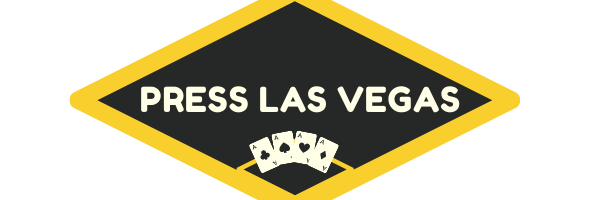REVEALED: Conclusive proof Scots DID vote for indyref2 at Holyrood election

A NEW analysis of the regional ballot for Holyrood has found backing for pro-independence parties and candidates reached over 50% in six out of eight areas of Scotland.
The most detailed breakdown of the list seat results yet – which includes independent candidates as well as parties such as the SNP, Greens, Alba, Restore Scotland, Scottish Renew, TUSC and Scotia Future – is revealed by the Sunday National today.
The research shows votes for those supporting Yes was the highest in Glasgow, at 58%. The North-East, Highlands and Islands, Mid Scotland and Fife, Lothian and Central also recorded an “indy-positive” vote of more than 50%.

Across the country, around 51% of votes were for independence supporting parties and candidates across Scotland, compared to around 48% for “indy-negative”.
This contrasts with the constituency seat results, where pro-indy parties won 49% of the vote – and which Unionists seized on to try to claim there was no mandate for a referendum.
The SNP said the new analysis exposes the “Trump-like” denial of democracy by pro-Union parties in trying to delegitimatise the result of the May 6 vote.

In one post-election TV interview on Sky, Cabinet Minister Michael Gove said: “If we look at the votes cast in constituencies in Scotland, more people voted for parties that were opposed to an independence referendum than those that might entertain that prospect.”
Gove also told the BBC that “a majority of people who voted in the constituencies voted for parties that were opposed to a referendum”, and that Sturgeon “didn’t secure a majority as Alex Salmond did in 2011. That is a significant difference”.
READ MORE: Ruth Wishart: Dirty tricks have begun, but Glasgow reminds us to be better
Later in the week Tory MSP Craig Hoy claimed the election result showed there is still a “narrow majority for remaining in the UK.”
Mathew Nicolson, deputy editor of Europe Elects, which analyses polls and elections across Europe, said: “There is an interesting point on how people voted differently on the two ballots.
“There is a question about which ballot you see as a more legitimate reflection of people’s genuine desires.

“I generally tend to view the regional vote in that way because it is the proportional one and there are more parties to choose from. Generally there is less tactical voting there.”
He pointed out, however, that mandates were normally viewed in terms of the number of seats rather than vote share.
The SNP won 64 seats, missing out on an overall majority by just one seat, after winning a record number of constituencies despite an increase in anti-independence tactical voting. A record eight seats for the Greens secured a pro-independence majority at Holyrood.
READ MORE: Andrew Tickell: How this week reminded us that not all nationalisms are equal
That view was backed by polling expert Mark Diffley, who said the SNP were the “clear winners” of the election.
“You judge these things by representation in parliament and there is a majority in parliament for another referendum,” he said.
“As many people have pointed out, the Tories won the election in 2015 on the back of about 37% of the vote, but got an overall majority in parliament which gave them the mandate to hold the EU referendum. So this is how it works in a parliamentary democracy.”
The analysis of the regional ballot also looked at pro-Union parties and candidates – including the Tories, Labour, Liberal Democrats, All for Unity, Reform UK, UKIP and Independent Green Voice.
Pro-Union representatives attracted the most votes in two regions – South Scotland and West Scotland, at 55.3% and 49.6% respectively. Parties and candidates which were either expressly neutral on the issue of the constitution, or did not mention it, attracted 1.1% of the list vote. Diffley pointed out while the constitution was the strongest predictor of how people voted, it was not the only one.
READ MORE: Kenmure Street is wake-up call to plan how we will win indyref
He said: “There are still people who vote Labour particularly and support independence, just as there are a few people who vote for the SNP and don’t support independence.”
After the SNP secured a historic fourth term at Holyrood, First Minister Nicola Sturgeon told Boris Johnson a second referendum is a “matter of when, not if”.
Diffley said with polling showing an approximate 50/50 split for and against independence, neither side would go into a campaign feeling confident of winning at the moment.
He said delaying the referendum until after the Covid crisis is over will give both the UK Government and Yes movement time to detail their arguments.
“All that adds up to probably the next couple of years being a kind of ‘cold war’ of rhetoric and very little else,” he added.
Responding to the analysis, SNP Depute Leader Keith Brown said: “These figures are absolute proof, if more proof was needed, that Scotland voted to take our future into our hands on May 6 and not to leave it in the hands of Tories like Boris Johnson. Desperate opposition politicians have looked increasingly ludicrous over the past week trying to deny what everyone knows – the sovereign people of Scotland elected a rock-solid and undeniable pro-indy majority to the Scottish Parliament.
“This voting analysis exposes the efforts of pro-Union parties to delegitimatise the result of the May 6 vote as an outrageous and Trump-like denial of democracy. That is a very dangerous tactic which must stop now.”
He added: “The SNP achieved a record number of votes, a record number of constituency seats and – along with the Greens – there is an unprecedented 15-seat cross-party pro-indy majority at Holyrood.
“That means there will be a post-pandemic independence referendum, once the Covid crisis is over.”
[ad_2] File source






